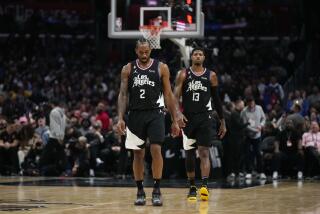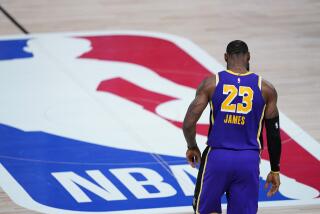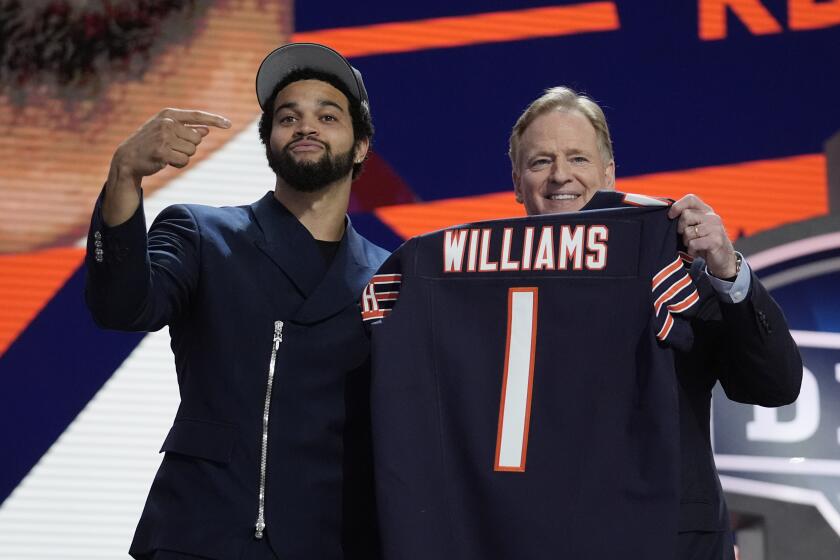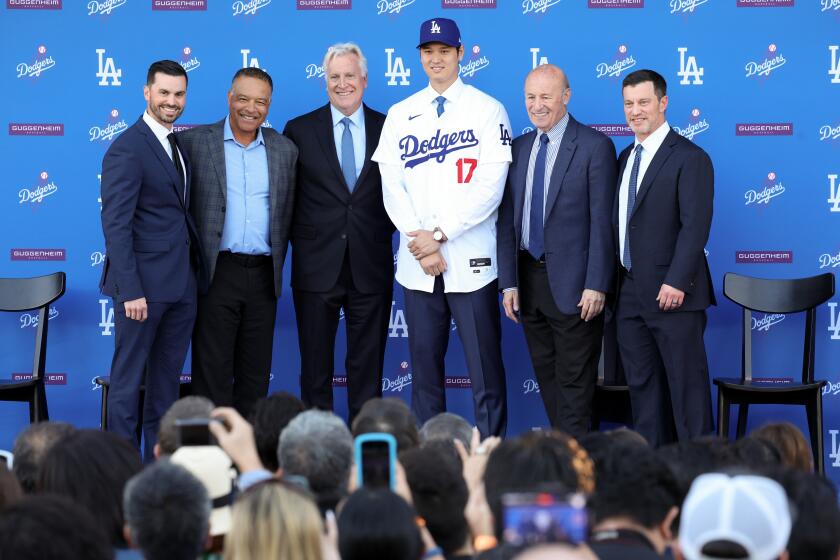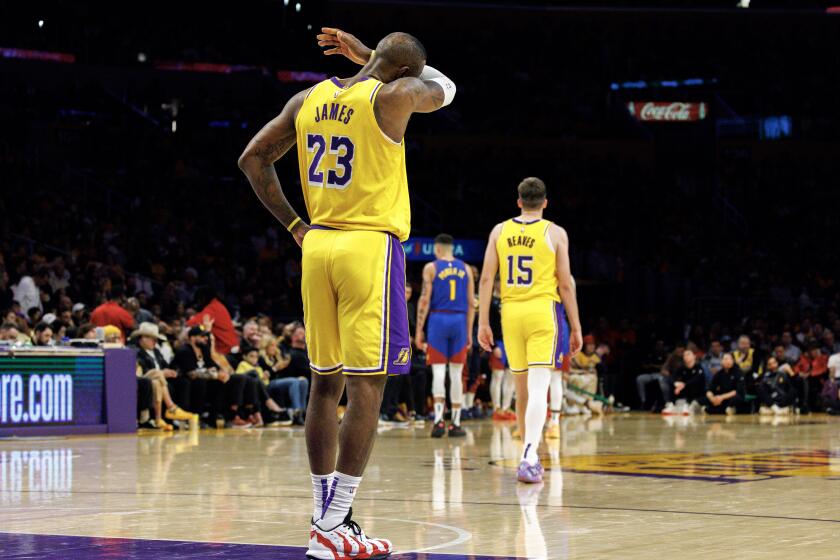NBA attendance is up compared to last season
During the depths of the NBA lockout, when the 2011-12 season was hanging by a shoelace, disenchanted fans took to blogs and social media to proclaim they would never return after owners and players stopped feuding.
Ask those fans what they think now, a week into the season, and you might not get an immediate response. They’re busy marveling over Kevin Durant’s clutch shooting for Oklahoma City, Kobe Bryant’s ability to prove age is only a number, Chicago’s Derrick Rose reprising his MVP exploits, and the Clippers’ efforts to become relevant.
Although shortened training camps have produced some ragged play, the NBA’s first week has been a success by other measures.
The post-lockout scramble to fill rosters through free agency and trades was enormously entertaining, a fantasy league come to life. Chris Paul was a Laker, then he wasn’t. He was a Clipper, then he wasn’t and then he was. The twists and rumors were perfect for Twitter-addicted fans and players who commented on their Twitter accounts, creating greater anticipation for the season than a normal training camp could have.
The five Christmas Day openers produced healthy ratings on TNT, ABC and ESPN, as ABC drew 11 million viewers for the Lakers-Chicago Bulls game, its third-largest NBA audience ever. TNT’s average of 5.9 million viewers for the Boston Celtics-New York Knicks game made that the most-viewed NBA Christmas Day game on cable.
In addition, 25 of the first 32 games were sellouts, up from 19 of the first 32 last season. Chris Granger, the NBA’s executive vice president for team marketing and business operations, said fan-friendly initiatives helped teams play to 99.2% of capacity over the first 32 games, up from 90.3% for the full 2010-11 season.
“We’re very focused on our relationship with our fans and our suite holders and our corporate partners, and have been throughout this work stoppage,” Granger said in a phone conversation. “We clearly appreciate their patience. We clearly understand the stresses we put on them and their businesses.
“We’re always worried about our relationship with them. But I think it speaks to our teams and their ability to maintain good relationships with our fans even during a difficult time. Hopefully, that’s part of the reason things seem to be going pretty well so far.”
Attendance might fall after the holidays or when the condensed schedule forces teams to play many home games in a short period. The New Jersey Nets’ lame-duck status in their final season before moving to Brooklyn could also keep fans away. And the excitement of the new season might fade quickly in some cities. Indiana, which averaged a league-low 13,538 at home last season, drew 13,004 Friday. The Phoenix Suns on Wednesday drew 16,360, about 1,200 below their average for last season.
The NBA encouraged teams to make about 500 tickets per game available at $10 or less and Granger said about 1 million $10 tickets will be available over the course of the season. Each team was also required to submit to the league a “Back to Business” plan that included proposals catering to fans, and those ideas were shared.
In Atlanta, the Hawks operated a toll booth and paid tolls for drivers during the morning rush. In Minnesota, the Timberwolves staffed the drive-through window of a fast-food restaurant where they greeted fans, took orders and paid for meals.
The Pacers emphasized community ties by giving profits from a preseason game to the United Way of Central Indiana and donating 30,000 toys to children in central Indiana. The Philadelphia 76ers are creating a group called the 76ers Revolutionaries, asking fans to try out and giving the craziest a free season ticket in a 76-person section.
“There’s a whole bunch of things like that,” Granger said. “I think it speaks to our teams and their creativity and their commitment to engaging their fans in this Back to Business plan.”
They’ll need that creativity to keep drawing fans in many places as the season wears on. But at least there’s a season to follow, not marathon labor talks, and for that we can all be grateful.
twitter.com/helenenothelen
More to Read
Get our high school sports newsletter
Prep Rally is devoted to the SoCal high school sports experience, bringing you scores, stories and a behind-the-scenes look at what makes prep sports so popular.
You may occasionally receive promotional content from the Los Angeles Times.
